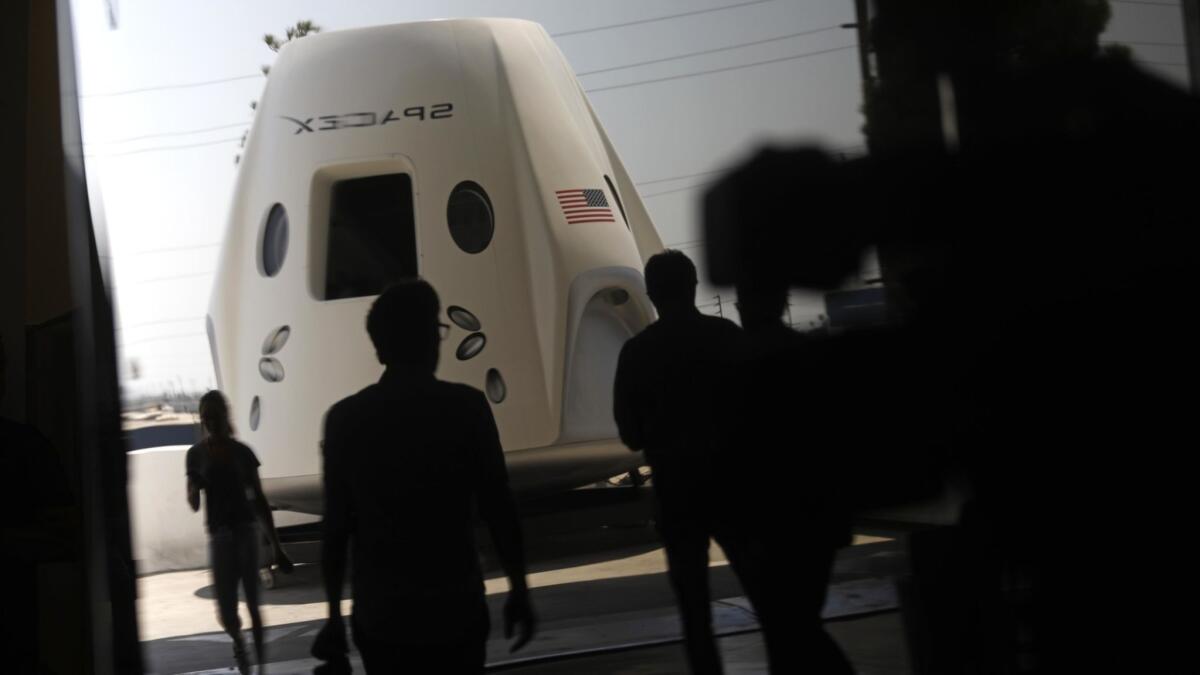NASA is almost ready to let SpaceX fuel rockets while astronauts are strapped in

NASA is tentatively agreeing to let SpaceX fuel its rocket while astronauts are already strapped into a capsule on top waiting to be flown to the International Space Station, though the agency said it needs to see more demonstrations before it gives final approval.
SpaceX used a similar process with a rocket that exploded in 2016, destroying the satellite it was carrying, but NASA said it has since scrutinized the process and found it is not especially risky.
NASA conducted an “extensive review” of SpaceX’s ground operations, rocket design, escape systems and “operational history,” an agency official said Friday.
“Safety for our personnel was the driver for this analysis, and the team’s assessment was that this plan presents the least risk,” Kathy Lueders, manager of NASA’s Commercial Crew program, said in a statement.
Under contract with NASA, Elon Musk-led SpaceX is developing a capsule to transport U.S. astronauts to the International Space Station. Aerospace giant Boeing Co. is working on a competing astronaut capsule for the space agency. Typically, rockets have been fueled before astronauts board; Boeing plans to use this traditional method.
During the SpaceX “load-and-go” process, astronauts would board SpaceX’s Crew Dragon spacecraft about two hours before launch. The Falcon 9 rocket that will hoist the capsule to space would be fueled about 35 minutes before launch, after the astronauts are strapped into their seats.
The Hawthorne company loads propellant so close to launch time because it uses super-chilled liquid oxygen, which maximizes the amount of propellant that can fit in the rocket’s tank and enhances the Falcon 9’s power at liftoff. SpaceX already uses this procedure when it launches satellites and cargo supplies for NASA to the International Space Station, but the standards for safety are higher when humans are aboard.
SpaceX has said loading propellant so close to launch would minimize the amount of time astronauts are exposed to a fuel-loaded rocket, and company President Gwynne Shotwell said last week that the capsule’s launch escape system and heat shield would protect astronauts in the event of an emergency.
“We would never have proposed it if we thought it was a less safe way to go,” she said.
Robert Behnken, a U.S. Air Force colonel and veteran of two space shuttle missions who will be flying in SpaceX’s capsule for its first test flight, said last week during the SpaceX event that the astronauts were “really comfortable” with the process NASA uses to analyze technical risks.
But the fueling procedure has previously drawn scrutiny from lawmakers and members of NASA’s Aerospace Safety Advisory Panel, which flagged the method for further study in a report released in January 2017. Two years ago, a Falcon 9 rocket exploded on a Florida launch pad while propellant was being loaded into the vehicle, damaging the pad and destroying the rocket and a commercial communications satellite that SpaceX was set to launch.
An investigation later found that the inner lining of a pressure vessel in the rocket’s second-stage liquid oxygen tank had buckled, forming folds and ridges. The super-chilled liquid oxygen gathered in those folds and became trapped there. SpaceX said the tank probably failed because “breaking fibers or friction” could then ignite the trapped bits of oxygen.
Since then, SpaceX has redesigned those vessels, and NASA started a “rigorous” test program to understand how they react to an extremely cold environment, according to a report released by the NASA Aerospace Safety Advisory Panel this year.
In May, the panel said the load-and-go process seemed to be a “viable option.”
NASA said Friday that it would give final certification of the procedure after “additional verification and demonstration activities,” including five crew-loading demonstrations.
“After these conditions have been met, NASA will assess any remaining risk before determining that the system is certified to fly with crew,” NASA said in a statement.
The first test flight of the capsule with crew aboard is scheduled for April 2019.
Twitter: @smasunaga






